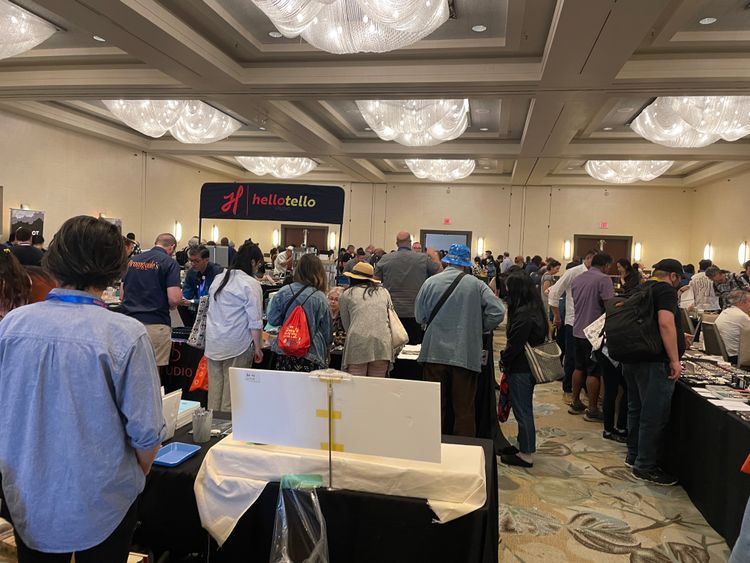How To Choose A Mechanical Pencil

The mechanical pencil market is daunting -- Reviewers from all over the internet praise so many different models that it can be daunting to decide what deserves your hard-earned cash. So, to combat this, I've compiled a list of considerations that will hopefully help you determine what pencil would best fit your needs. I wish you good luck on your journey to find your next friend (that is, a writing instrument).
The Questions
What lead size should I choose?
This is the most basic question, but also the most important as it will be dictating your general writing experience. There are a TON of lead sizes in the market, ranging from 0.2 mm to over 5 mm in diameter, so this decision is important. However, the more common sizes for daily use of mechanical pencils are 0.3 mm, 0.5 mm, 0.7 mm, and 2 mm.

0.3 mm: Typically less "mainstream" in the United States, this diameter is thin but brittle. 0.3 mm is your diameter if you write on the lighter side and prefer a thin line. From my personal experiences, I've had to be much more careful when writing with 0.3 mm. A full metal pencil in this diameter is not wise – the lead would break under slight additional pressure to the metal body. I wouldn't recommend buying this diameter as your first "nicer" mechanical pencil, and experimenting with other sizes would be better.
0.5 mm: This is a very common lead size, and most mechanical pencils are offered in 0.5 mm. Having nearly double the diameter of 0.3 mm, 0.5 mm is much sturdier and appropriate for almost all writing. I've always returned to this diameter for its versatility and reliability. I break my 0.5 pencils sparingly and enjoy the crisp line that it brings without carefulness. If you don't have a set diameter in mind, 0.5 mm is the best place to start.
0.7 mm: Along with the previous lead size, this diameter is very popular. Ideal for heavier-handed writers, 0.7 mm is relatively difficult to break and produces a nice, thicker line with smoother writing than previously mentioned diameters. I occasionally like using this diameter, but due to the "chunkiness" of the thick line, I more often than not opt for a smaller diameter. I find the dullness that comes with this diameter (when, after writing, one side is used more than the other, creating a "slant" in the lead, so that side's diameter becomes larger) too distracting for daily use, but it's still a great size.
2.0 mm: This diameter is on the rarer side. Mechanical pencils using this diameter are often called "lead holders." Using this diameter mimics the feel of using an actual pencil, which makes sense as traditional #2 wooden pencils are roughly the same diameter. Most of these pencils also come with a built-in sharpener in the pencil's cap, where you can sharpen the tip of the lead for a finer point. I don't know the appeal of mechanical pencils in this diameter, but they are sure cool. However, I usually gravitate towards the smaller diameters because the benefits of using a mechanical pencil diminish as you increase the lead size.
Overall: For those just entering the mechanical pencil market, I recommend choosing either 0.5 mm or 0.7 mm as they are the safest options. If you want a fine line, go with 0.5 mm; if you want a sturdier diameter, go with 0.7 mm. Both are usable in daily tasks.
Do I need an over-engineered mechanical pencil?
There are many different models with various mechanisms to improve the writing experience. However, mechanisms that work for one person may feel uncomfortable for someone else. In the modern market, most of the products you encounter will have a standard mechanism, a "lead guard" mechanism, or an "auto advance" mechanism.
The "Standard" Mechanism: By far the most common, mechanical pencils falling under this category are "no-frills" and are exactly what you would expect from a standard mechanical pencil. The lead advances with a click and is firm without any cushioning. If you've ever used a mechanical pencil, it was probably one of these. They're reliable but nothing fancy in terms of how they work. Those looking for something extremely reliable should choose a pencil in this category. Popular pencils in this category include the Rotring 600, Pentel Kerry, and Staedtler 925-35.

The "Lead Guard" Mechanism: Pencils in this category have a mechanism that prevents lead breakage. Mostly, this is done by adding a spring that can absorb excess pressure that would break a standard mechanical pencil. Most pencils using this mechanism are effective, and the writing experience remains pleasurable. There is a noticeable "bouncy" feel with every stroke, but I don't mind it – I find it rather satisfying to use. Popular mechanical pencils with this mechanism include the Zebra DelGuard series and the Rotring Rapid Pro.

The "Auto Advance" Mechanism: Probably the least common "mainstream" mechanism, this mechanism discretely advances lead as you press down on the page, so you don't have to click. Pencils with this mechanism still include clickers to advance the lead, so you don't have to worry about anything going wrong. Auto-advancing mechanisms have less of a tactical impact compared to lead guard mechanisms, and I also find them mostly reliable. Popular mechanical pencils with auto advancement include the Uni Kuru Toga series, the Platinum OLeNU Shield series, and the Pentel Orenz series.

Overall: Of course, not all mechanisms can be categorized into these groups in the vast sea of mechanical pencils. However, these three mechanisms listed above have been proven effective and dominate the market for specialized mechanical pencils, so I've chosen to focus on these three categories. To determine which type of mechanism you enjoy, reflect upon your writing style and conclude which would most likely be the most beneficial to your writing.
What should my pencil be made of?
A mechanical pencil's materials are vital to the instrument's cost and overall feel. To make an educated purchase, consider what you want in a pencil. I've found that most mechanical pencils fall under three categories in terms of material makeup: full plastic, half metal, or full metal.
Full Plastic Pencils: By far the most affordable option, plastic pencils are reliable and suitable if you want to try a new mechanism or brand without breaking the bank. Of course, these pencils don't have the same quality as the other materials, but most people will still find them enjoyable. Most plastic pencils can range from $2 to $10, and many lines, such as the Uni Kuru Toga and Zebra DelGuard, have plastic offerings.

Half Metal Pencils: Typically made of a plastic barrel and a metal grip, half metal pencils have a higher sense of quality and are pleasant to use. Many people find these pencils to be the "sweet spot" in terms of feel – they're not too heavy but have a nice feeling. These pencils are suitable for longer writing sessions and will not fatigue your hands. Hitting the $10 to $20 mark, these pencils are more expensive, but the quality is noticeable. Many lines also offer metal grip pencils, including the Uni Kuru Toga, Zebra DelGuard, and Orenz Nero.

Full Metal Pencils: These are the heaviest out of the bunch and, more often than not, the most expensive. Although they have a noticeably high sense of quality, they can often be overwhelming to use for a prolonged time. Many of these pencils are actually designed to be used for specialized purposes, as drafting pencils tailed towards precision work, where endurance isn't the priority. If you write an essay using one of these, your hands will probably not end up in the best shape. These pencils are rarer, and the most popular ones are the Rotring 600 and Rotring 800/800+.

How much should I spend?
Of course, the price will be a huge factor when considering a mechanical pencil. If you want to get a taste of a new mechanism, the best way to do it would be to buy the entry-level model, which would set you back a few dollars. However, if you found something you've thoroughly enjoyed, feel free to splurge a little more and get a more premium model. Overall, you shouldn't spend more than $20 on a mechanical pencil unless you're entirely sure you love it, then go overboard. Consider all the things you want, and buy what you feel is best for your use.






Comments ()